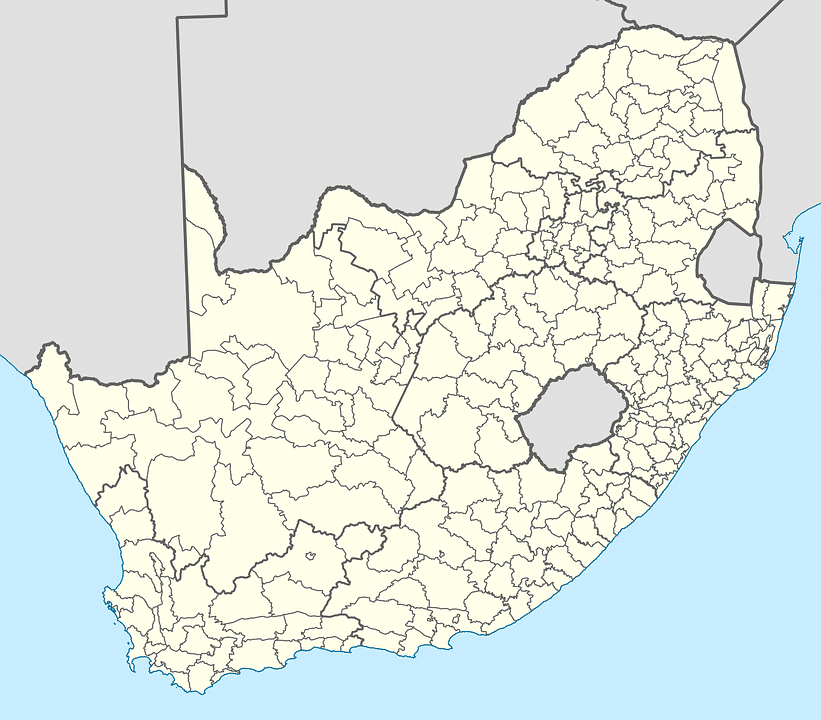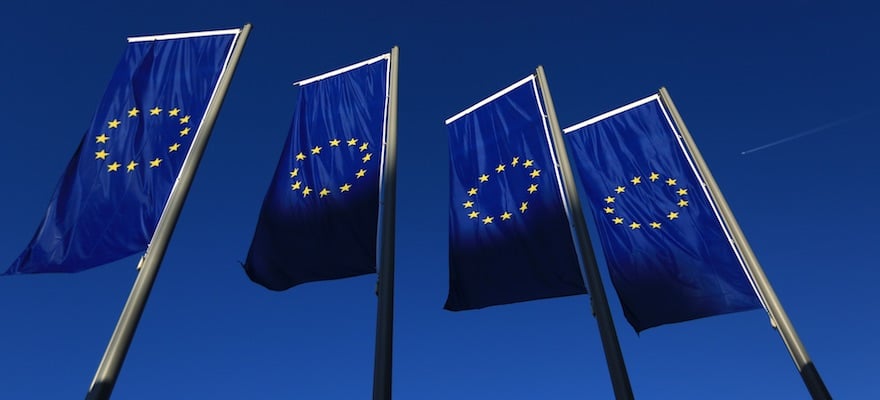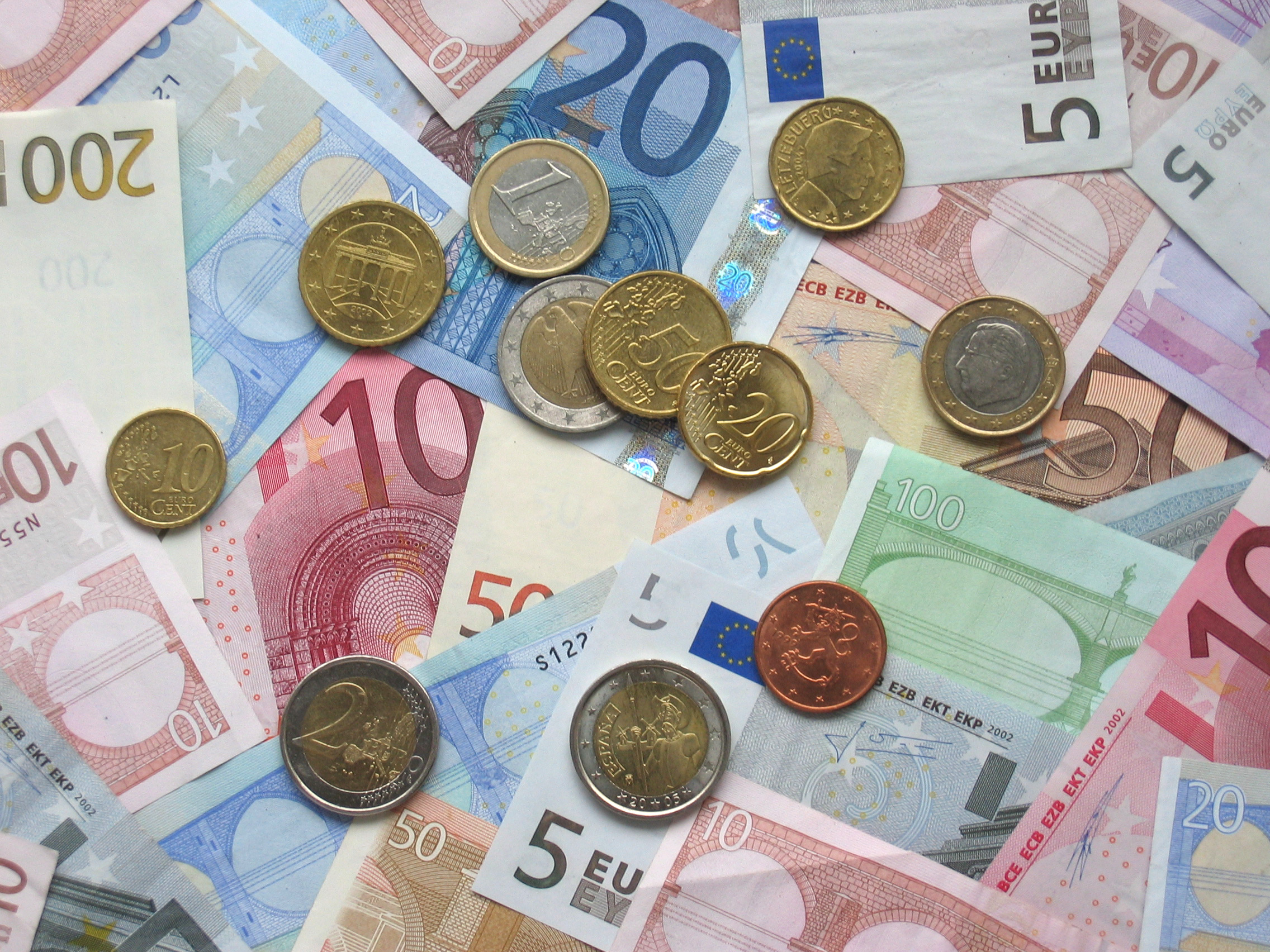This article was written by Idan Levitov, head analyst for anyoption.com.
The South African Economy in a State of Flux
Over the past month, the South African rand has endured a rollercoaster, starting at 0.0698 to the greenback, climbing as high as 0.0755, and then dropping to 0.0705. The 0.99% retreat in the ZAR/USD currency pair is par for the course with this volatile currency over such a short period of time. South Africa’s economy, like its beleaguered currency, is heavily dependent on the internal dynamics shaping the political spectrum.
Take the lead from today’s leaders. FM London Summit, 14-15 November, 2016. Register here!
The recently held municipal elections saw strong gains for the official opposition party, the Democratic Alliance and this helped to strengthen the currency. The African National Congress (ANC) has ruled with a near two thirds majority since democracy was brought to the country 22 years ago.
Another Tough Week for the ZAR/USD Pair
However, the South African economy is racked by political instability, a crumbling infrastructure and an ongoing series of scandals at the highest level. Just recently, the country’s Finance Minister, Pravin Gordhan, and the president of the country Jacob Zuma have been at loggerheads over an impending police investigation. The country’s Internal Revenue Service (IRS) was previously run by the incumbent Finance Minister. The South African Police Services are now pursuing charges against the Finance Minister, as evidenced by the warning statement issued to him.
Since the economy is largely driven by the actions of the Finance Ministry, this had dire implications for the embattled South African currency. The rand was trading at 0.0744 to the greenback on August 23, and after news broke of the police warning, the rand plunged to 0.0701 by August 24, and later dropped to 0.0697 by Friday, August 26.
The downward trend is evident in the losses between Monday and Friday, amounting to -6.13% for the ZAR/USD over the past 5 days. For the year-to-date, the picture is different, and the rand has appreciated from 0.0647 to its current level of 0.0705 (+9.46%).
Over the past 1 year, the ZAR has depreciated by 7.50%, over the past 2 years it has depreciated by 25.26%, and over the past 5 years it has depreciated by 50.81%. In January, the ZAR hit its low point of 17.80 to the greenback after President Jacob Zuma fired the Finance Minister in a vote of no-confidence.
The current Finance Minister is embroiled in a potentially devastating scandal of corruption and malfeasance, and this has sent the rand spiraling once again. Clearly, this emerging market currency is under pressure to perform despite staging a mini-recovery of late.
South Africa in the Global Context
The economic slowdown in China had a devastating effect on the South African economy. Since South Africa relies heavily on its minerals exports, the rapid cooling of the Chinese economy hit mining companies hard. The replacement of the previous Finance Minister had a positive effect on the currency, as did the weakening of ANC in the last election.
Analysts are of the opinion that the political component in emerging market economies is paramount. This is an important driver of currency strength or weakness as it is directly related to inherent investment risk. Clearly, when major economies like China, the eurozone, Japan, the US or the UK are faltering, foreign direct investment to emerging market economies like South Africa dries up.
Another important concern is the Fed. The recently held 2-day Jackson Hole, Wyoming conference (Friday, August 26, 2016) is a prelude to the inner-mechanics driving Fed policy at this time.
US Interest Rates and How They Affect the ZAR
Presently, the likelihood of a Fed rate hike in 2016 is slim but if rates are increased it will probably be closer to the December 14 Fed FOMC meeting. According to the CMEGroup Fedwatch tool, there is an increased probability of a 25-basis point rate hike on Wednesday, 21 September 2016.
Analysts have upped the likelihood from 21% to 33% that the Fed will raise interest rates to 0.50% – 0.75%. The current probability of interest rates remaining at 0.25% - 0.50% is down from 79% to 67%.
Extrapolating further to the meeting on Wednesday, 2 November 2016, the likelihood of interest rates remaining at their current level is 61.5%, and 35.8% for rates rising to 0.50% – 0.75%. The likelihood of interest rates rising to 0.75% – 1%, is now 2.7%.
The final Fed meeting will be taking place on Wednesday, 14 December 2016. There is a 44.4% likelihood of interest rates rising to 0.50% – 0.75%, and a 40.9% likelihood of interest rates staying at their current level of 0.25% – 0.50%. Analysts also project a 13.8% chance of the federal funds rate rising to 0.75% – 1%.
All of these numbers point to interest rates rising before the end of the year. A rate hike will strengthen the USD and result in an influx of FDI into the US economy.
This increased demand for dollars is facilitated by decreased demand for other currencies such as the ZAR. Currency markets do not always react in a linear fashion with economic announcements since speculative sentiment drives markets even before the announcement has been made. For the most part, an impending rate hike works its way through the currency markets before the announcement has been made. It is more likely to be a gradual depreciation of the ZAR towards the end of the year than a sharp drop.
Fed Resists the Urge to Hike Interest Rates
For now, the Fed has been cautious about hiking interest rates because it wants to safeguard the balance of the global economy. This is especially true now that Britain is on the path to a Brexit
Brexit
Brexit stands for British Exit, or in reference to the United Kingdom’s decision to formally leave the European Union (EU) as declared in a June 23, 2016 referendum. In a more immediate sense, a tight vote and unexpected result helped drive British pound (GBP) to lows that had not been seen in decades.The day following the referendum, former Prime Minister David Cameron resigned from office where he was replaced by Theresa May, who later resigned from office on June 7th, 2019. Active Prime Minis
Brexit stands for British Exit, or in reference to the United Kingdom’s decision to formally leave the European Union (EU) as declared in a June 23, 2016 referendum. In a more immediate sense, a tight vote and unexpected result helped drive British pound (GBP) to lows that had not been seen in decades.The day following the referendum, former Prime Minister David Cameron resigned from office where he was replaced by Theresa May, who later resigned from office on June 7th, 2019. Active Prime Minis
Read this Term.
The EUR has strengthened marginally against the greenback, while the JPY has enjoyed a strong year as a safe-haven currency for investors. The implications of a Fed rate hike will likely be less effective at strengthening the USD/EUR pair or the USD/JPY pair than it would strengthen the USD/ZAR pair.
Emerging markets and their currencies tend to bear the brunt of a strong USD. On the plus side, the South African rand has been helped by central bank, the SARB.
Inflation was running at 7% year-on-year in February, and it has been brought back down towards 6% in July 2016. The next inflation update will be on 21 August 2016 and the consensus forecast is 6.4%. The current inflation figure is the lowest on record for the year. This is largely due to declining energy costs in crude oil and natural gas, but it has not been helped by rising food costs.
The 7-month low inflation rate in South Africa was matched by a 7-month low inflation in the US in July of 0.8%. The difference between these two is startling, and it indicates how much developed economies are struggling to hit inflation targets.
Japanese Prime Minister Looking to Pump Billions into African Continent
The Japanese Prime Minister Shinzo Abe recently announced that his country would be investing $30 billion into various African economies between now and 2019. Abe was meeting with African leaders in Nairobi, Kenya at the Tokyo International Conference on African Development.
This was the first time in 6 years that the conference was hosted outside of Japan, and some 34 of the 54 nations were represented. Foremost among them were delegates from South Africa, Uganda, Nigeria, and Ivory Coast.
Various global powers are already deeply invested in Africa, including front-runner China and the US. For its part, the world’s second-largest economy has made a pledge of $60 billion worth of investment in sub-Saharan Africa, while meeting in South Africa. These massive FDI inflows act as a counter to declining European and US investment in emerging market economies.
Over the past two decades, Japan has pumped $47 billion into the African continent, and its long-term objective is the creation of a transportation network via sea lanes from Africa to Asia. Viewed from a strategic perspective, there is tremendous optimism in the South African economy provided the leadership is able to disseminate and manage resources effectively.
This article was written by Idan Levitov, head analyst for anyoption.com.
The South African Economy in a State of Flux
Over the past month, the South African rand has endured a rollercoaster, starting at 0.0698 to the greenback, climbing as high as 0.0755, and then dropping to 0.0705. The 0.99% retreat in the ZAR/USD currency pair is par for the course with this volatile currency over such a short period of time. South Africa’s economy, like its beleaguered currency, is heavily dependent on the internal dynamics shaping the political spectrum.
Take the lead from today’s leaders. FM London Summit, 14-15 November, 2016. Register here!
The recently held municipal elections saw strong gains for the official opposition party, the Democratic Alliance and this helped to strengthen the currency. The African National Congress (ANC) has ruled with a near two thirds majority since democracy was brought to the country 22 years ago.
Another Tough Week for the ZAR/USD Pair
However, the South African economy is racked by political instability, a crumbling infrastructure and an ongoing series of scandals at the highest level. Just recently, the country’s Finance Minister, Pravin Gordhan, and the president of the country Jacob Zuma have been at loggerheads over an impending police investigation. The country’s Internal Revenue Service (IRS) was previously run by the incumbent Finance Minister. The South African Police Services are now pursuing charges against the Finance Minister, as evidenced by the warning statement issued to him.
Since the economy is largely driven by the actions of the Finance Ministry, this had dire implications for the embattled South African currency. The rand was trading at 0.0744 to the greenback on August 23, and after news broke of the police warning, the rand plunged to 0.0701 by August 24, and later dropped to 0.0697 by Friday, August 26.
The downward trend is evident in the losses between Monday and Friday, amounting to -6.13% for the ZAR/USD over the past 5 days. For the year-to-date, the picture is different, and the rand has appreciated from 0.0647 to its current level of 0.0705 (+9.46%).
Over the past 1 year, the ZAR has depreciated by 7.50%, over the past 2 years it has depreciated by 25.26%, and over the past 5 years it has depreciated by 50.81%. In January, the ZAR hit its low point of 17.80 to the greenback after President Jacob Zuma fired the Finance Minister in a vote of no-confidence.
The current Finance Minister is embroiled in a potentially devastating scandal of corruption and malfeasance, and this has sent the rand spiraling once again. Clearly, this emerging market currency is under pressure to perform despite staging a mini-recovery of late.
South Africa in the Global Context
The economic slowdown in China had a devastating effect on the South African economy. Since South Africa relies heavily on its minerals exports, the rapid cooling of the Chinese economy hit mining companies hard. The replacement of the previous Finance Minister had a positive effect on the currency, as did the weakening of ANC in the last election.
Analysts are of the opinion that the political component in emerging market economies is paramount. This is an important driver of currency strength or weakness as it is directly related to inherent investment risk. Clearly, when major economies like China, the eurozone, Japan, the US or the UK are faltering, foreign direct investment to emerging market economies like South Africa dries up.
Another important concern is the Fed. The recently held 2-day Jackson Hole, Wyoming conference (Friday, August 26, 2016) is a prelude to the inner-mechanics driving Fed policy at this time.
US Interest Rates and How They Affect the ZAR
Presently, the likelihood of a Fed rate hike in 2016 is slim but if rates are increased it will probably be closer to the December 14 Fed FOMC meeting. According to the CMEGroup Fedwatch tool, there is an increased probability of a 25-basis point rate hike on Wednesday, 21 September 2016.
Analysts have upped the likelihood from 21% to 33% that the Fed will raise interest rates to 0.50% – 0.75%. The current probability of interest rates remaining at 0.25% - 0.50% is down from 79% to 67%.
Extrapolating further to the meeting on Wednesday, 2 November 2016, the likelihood of interest rates remaining at their current level is 61.5%, and 35.8% for rates rising to 0.50% – 0.75%. The likelihood of interest rates rising to 0.75% – 1%, is now 2.7%.
The final Fed meeting will be taking place on Wednesday, 14 December 2016. There is a 44.4% likelihood of interest rates rising to 0.50% – 0.75%, and a 40.9% likelihood of interest rates staying at their current level of 0.25% – 0.50%. Analysts also project a 13.8% chance of the federal funds rate rising to 0.75% – 1%.
All of these numbers point to interest rates rising before the end of the year. A rate hike will strengthen the USD and result in an influx of FDI into the US economy.
This increased demand for dollars is facilitated by decreased demand for other currencies such as the ZAR. Currency markets do not always react in a linear fashion with economic announcements since speculative sentiment drives markets even before the announcement has been made. For the most part, an impending rate hike works its way through the currency markets before the announcement has been made. It is more likely to be a gradual depreciation of the ZAR towards the end of the year than a sharp drop.
Fed Resists the Urge to Hike Interest Rates
For now, the Fed has been cautious about hiking interest rates because it wants to safeguard the balance of the global economy. This is especially true now that Britain is on the path to a Brexit
Brexit
Brexit stands for British Exit, or in reference to the United Kingdom’s decision to formally leave the European Union (EU) as declared in a June 23, 2016 referendum. In a more immediate sense, a tight vote and unexpected result helped drive British pound (GBP) to lows that had not been seen in decades.The day following the referendum, former Prime Minister David Cameron resigned from office where he was replaced by Theresa May, who later resigned from office on June 7th, 2019. Active Prime Minis
Brexit stands for British Exit, or in reference to the United Kingdom’s decision to formally leave the European Union (EU) as declared in a June 23, 2016 referendum. In a more immediate sense, a tight vote and unexpected result helped drive British pound (GBP) to lows that had not been seen in decades.The day following the referendum, former Prime Minister David Cameron resigned from office where he was replaced by Theresa May, who later resigned from office on June 7th, 2019. Active Prime Minis
Read this Term.
The EUR has strengthened marginally against the greenback, while the JPY has enjoyed a strong year as a safe-haven currency for investors. The implications of a Fed rate hike will likely be less effective at strengthening the USD/EUR pair or the USD/JPY pair than it would strengthen the USD/ZAR pair.
Emerging markets and their currencies tend to bear the brunt of a strong USD. On the plus side, the South African rand has been helped by central bank, the SARB.
Inflation was running at 7% year-on-year in February, and it has been brought back down towards 6% in July 2016. The next inflation update will be on 21 August 2016 and the consensus forecast is 6.4%. The current inflation figure is the lowest on record for the year. This is largely due to declining energy costs in crude oil and natural gas, but it has not been helped by rising food costs.
The 7-month low inflation rate in South Africa was matched by a 7-month low inflation in the US in July of 0.8%. The difference between these two is startling, and it indicates how much developed economies are struggling to hit inflation targets.
Japanese Prime Minister Looking to Pump Billions into African Continent
The Japanese Prime Minister Shinzo Abe recently announced that his country would be investing $30 billion into various African economies between now and 2019. Abe was meeting with African leaders in Nairobi, Kenya at the Tokyo International Conference on African Development.
This was the first time in 6 years that the conference was hosted outside of Japan, and some 34 of the 54 nations were represented. Foremost among them were delegates from South Africa, Uganda, Nigeria, and Ivory Coast.
Various global powers are already deeply invested in Africa, including front-runner China and the US. For its part, the world’s second-largest economy has made a pledge of $60 billion worth of investment in sub-Saharan Africa, while meeting in South Africa. These massive FDI inflows act as a counter to declining European and US investment in emerging market economies.
Over the past two decades, Japan has pumped $47 billion into the African continent, and its long-term objective is the creation of a transportation network via sea lanes from Africa to Asia. Viewed from a strategic perspective, there is tremendous optimism in the South African economy provided the leadership is able to disseminate and manage resources effectively.






















